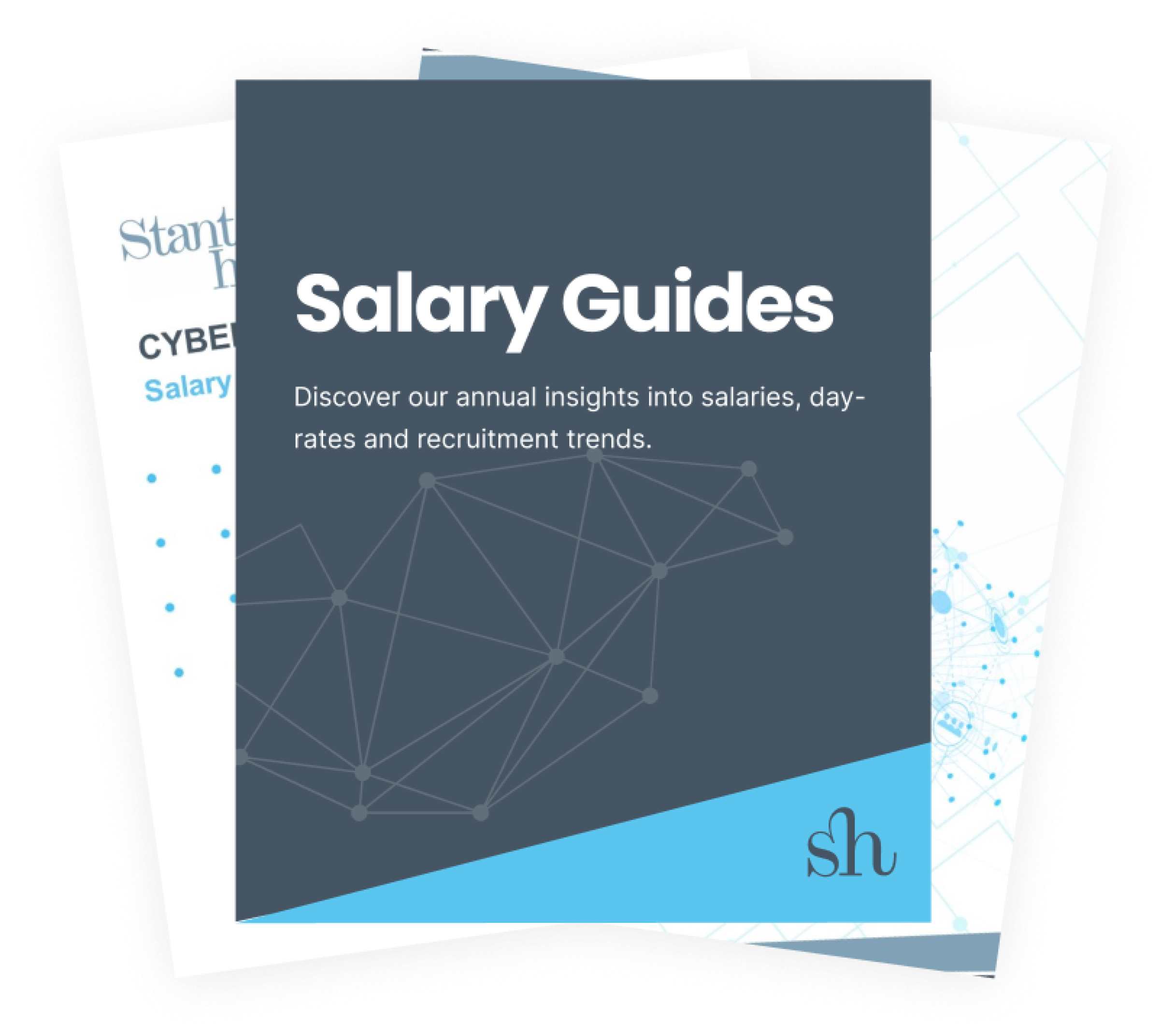
The Diversity Deficit: Inside Private Equity's Inclusion Crisis
Start-ups and large corporations encounter similar hurdles when it comes to hiring and developing their workforce. One significant challenge they share is the construction and preservation of a unified leadership team - where Diversity and Inclusion (D&I) are recognised as the crucial ingredients for success.
Yet within Private equity (PE), an industry known for its strategic investments and high-stakes deals, the push for greater Diversity and Inclusion has only recently started to gain momentum. PE funds and their portfolio companies still have significant ground to cover in terms of their people representation across gender, ethnicity, and social backgrounds.
Two of our Private Equity recruiting experts, Jarred Collis and Eddie Hemsley recently had the pleasure of speaking with Elizabeth Wallace, a seasoned Chief People Officer and VP of People at Superbet, a Blackstone Portfolio Company. They deliberated on the state of Diversity and Inclusion in the PE sector, delving into the distinct challenges encountered, and discussed actionable steps for employers in this domain to foster meaningful change.
Here are some takeaways from the conversation and a few video clips from our interview…
The Diversity Landscape in Private Equity
We started our interview by asking Elizabeth about the current state of diversity within the PE sector.
Elizabeth highlighted that similar to many industries, the PE sector lacks proportional representation from minorities and is far from equitable, especially at the senior level. Contrasting it with sectors like Banking, she emphasised that PE funds and their portfolio companies arguably lag furthest behind in both D&I comprehension and implementation of affirmative action measures.
“The PE sector is still very much learning about D&I. It is behind when you compare the sector to Banking, Insurance or Asset Management. But that doesn’t mean those sectors have it all figured out either. It’s a long journey and there are no quick fixes.”
“Private Equity's model is still very old-fashioned, you either fit into it or you don't. PE firms are generally made up of people who are very similar to each other, they all went to the same universities.”
“There's no role modelling from different backgrounds because you look up at the top and it's predominantly white and male.”
And she's right. According to a 2021 report by McKinsey & Company, women comprise only 19% of Executive teams in the Financial Services sector, which includes PE firms. Furthermore, ethnic minorities are vastly underrepresented, with Black professionals holding just 3% of Executive Finance roles.
The situation within Private Equity mirrors this disparity. In 2020 a study by Preqin, found women occupied a mere 18% of senior roles across Private Equity firms globally. Despite some progress at the entry-level, McKinsey & Company's 2023 report 'The State of Diversity in Global Private Markets' revealed that women continue to be underrepresented in leadership roles within PE, constituting only 20% of Managing Director positions.
Moreover, this lack of diversity extends to portfolio companies, where leadership teams often lack representation from diverse genders and ethnicities. Recent research into portfolio-level diversity has shown a slight improvement in female representation. According to a report from Invest Europe in 2022, 38% of full-time equivalent employees in PE/VC-backed companies were female, up from 36% in 2021. Although going in the right direction, this minor percentage increase hardly constitutes any major shift!
Interestingly, new research has found that socioeconomic background is even more likely to impact a person’s route to success in financial services than either gender or ethnicity. The Progress Together Data Report 2023 has revealed:
· Those from higher socio-economic backgrounds are more than twice as likely to be found in senior roles, compared with those from lower socio-economic backgrounds.
· Women from working-class backgrounds experience a significant ‘double disadvantage’, progressing 21% more slowly into senior roles than women from more advantaged families.
· White men from higher socio-economic backgrounds are 30 times more likely to be found in senior positions than working-class women from ethnic minority backgrounds.
· 20% of those in senior roles attended an independent school – more than triple the national percentage of pupils at these schools (6.4%).
· In the UK, more than 70% of venture capital partners come from affluent families.
Inclusion Challenges Heightened in Private Equity
We asked Elizbeth what she thought the specific D&I challenges were for those in the PE space and whether these challenges differed from those encountered in other organisations.
She pointed to the industry's historical lack of diversity, which has created a cycle of exclusion and limited access to opportunities for underrepresented groups. She spoke of the ‘risk-adverse’ mindset among General Partners, which has led to a self-perpetuating process of consciously (not even unconsciously!) hiring candidates who resemble themselves or fit traditional stereotypes of leadership.
“Regardless of how it looks from the outside, Private Equity investors are quite risk-averse around people. Even though they do a lot of due diligence, they’re trying to mitigate risk, while building as much value as possible, before selling. But I don’t think there is always a full understanding of what it takes to build a culture of inclusion and the value in that.”
“For investors, unfamiliarity with candidates outside of their industry or lacking a recognisable track record can be perceived as risky. Consequently, there's a tendency to maintain the status quo by primarily hiring from familiar circles.
Moreover, the demanding nature of the Private Equity industry, characterised by long hours and intense deal-making, can pose barriers to individuals with caregiving responsibilities, disproportionately affecting women. The lack of visible role models and mentors from diverse backgrounds further compounds these challenges, making it difficult for aspiring professionals to envision themselves succeeding in the industry.
“The same candidate pool is reused over and over again. You don’t get that fresh influx of ideas, that you would from different types of people. I think the General Partners are hiring more females, but they tend not to stay as the environment is not inclusive. You have got to start with inclusion for diversity to work.”
PE Investors Influence Change Downstream
So, it’s clear there is much work still to do. Thankfully, Elizabeth says that influence from Private Equity investors is expediting change further downstream.
Investors are increasingly prioritising Diversity and Inclusion when selecting PE partners. Institutional investors, such as pension funds and endowments, are incorporating diversity metrics into their due diligence processes and using their influence to push for greater transparency and accountability on diversity initiatives from fund managers.
Additionally, in the next few decades, we will see the largest generational wealth transfer in history with an estimated USD30 trillion from Baby Boomers to Millennials. This will mark an important milestone for investment where millennials filter through a sense of responsibility to concentrate investments on companies that are socially, ethically and environmentally responsible. This includes having a diverse workforce and an inclusive workplace.
“What we are starting to see, is that increasingly investors are making D&I a requirement and they won’t invest in companies that don’t have a diverse workforce. This is a trend which started in the US and is now filtering down to the UK.”
“I think investors into Private Equity funds have said to General Partners, now listen, we need to see you are thinking about Diversity and Inclusion in the same way you’re thinking about ESG, we need to see your statistics. However, change downstream is still quite nascent.”
“The need for start-ups to secure investment will be a huge impetus for change. I’m not saying the driving force behind this change (money) is the right reason, but it will certainly bring diverse and inclusive recruitment practices into focus.”
The Path Forward
Despite these challenges, there are signs of progress and a growing commitment to Diversity and Inclusion within Private Equity. Many firms have launched initiatives aimed at increasing the representation of women and ethnic minorities in senior roles. These initiatives include targeted recruitment efforts, diversity training programs, and mentorship initiatives designed to support the career advancement of underrepresented groups.
Elizabeth recommends starting with education and raising awareness. Simple actionable things like celebrating diversity awareness days, setting up D&I Committees (involving and including senior leadership/investors), and carrying out inclusion surveys to reveal some home truths and to bring people on the journey towards greater inclusion.
“I have carried out inclusion surveys in the past and feel they have been great at helping people to understand what inclusion means and that you can’t have diversity without it. It can be quite tricky at first, as the feedback you get can feel very personal to the company and there is potential for a defensive reaction. Feedback can include clear examples of why some people do not feel included and where improvements can be made.”
“An example of common behaviours that may not feel inclusive could be something as simple as senior management all sitting around a table while everyone else more junior stands around the edge of the room.”
While progress has been made, it’s clear that addressing systemic barriers to entry and advancement is essential. This includes offering flexible work arrangements, implementing unbiased hiring and promotion practices, and providing mentorship and sponsorship opportunities for underrepresented groups.
It is important that hiring managers focus on ‘potential, not prestige’, being mindful of bias towards prestigious universities that may exclude talented individuals from lower socio-economic backgrounds.
Firms must prioritise diversity at every level of their organisations, from entry-level positions to the highest echelons of leadership. This requires not only implementing diversity initiatives but also fostering an inclusive culture where all employees feel valued and supported.
At Stanton House, we partner with Private Equity funds and portfolio companies to recruit CFOs, FDs, and their teams. We strongly advocate for acknowledging the current Diversity and Inclusion challenges within the Private Equity sector and believe in fostering meaningful, open dialogue to propel progress forward. We invite you to share your insights on this important topic by joining the conversation in the comments below!
Sources:
1. Quickfire Q&A video interview with Stanton House and Elizabeth Wallace
2. McKinsey & Company, "Diversity Wins: How Inclusion Matters" (2021)
3. Preqin, "Diversity and Inclusion in Private Equity: A Changing Landscape" (2020)
4. McKinsey & Company, “The State of Diversity in Global Private Markets” (2023)
5. Invest Europe, ESG KPI Report (2024)
6. The Progress Together Data Report (2023)



















